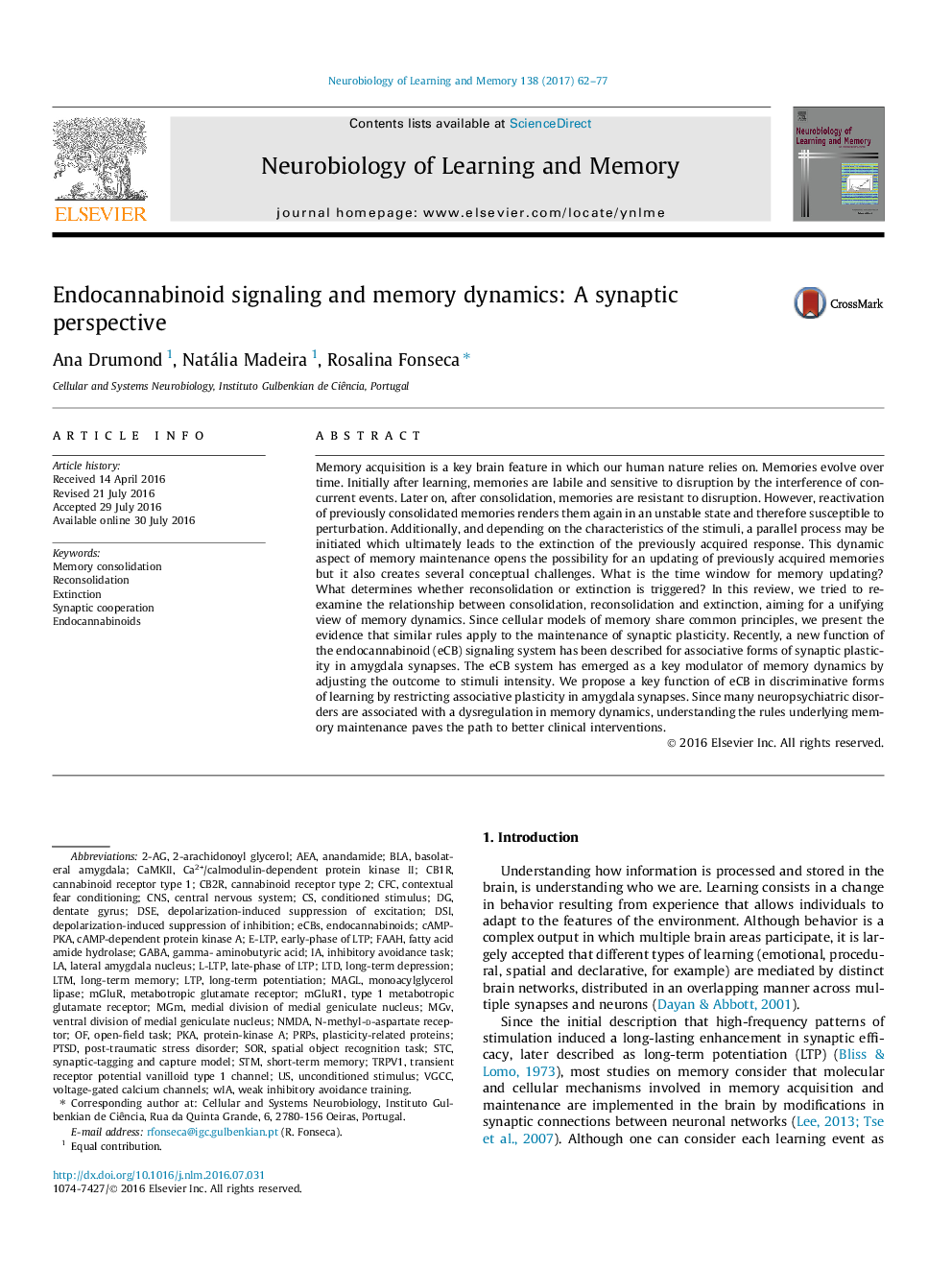| کد مقاله | کد نشریه | سال انتشار | مقاله انگلیسی | نسخه تمام متن |
|---|---|---|---|---|
| 5043321 | 1475136 | 2017 | 16 صفحه PDF | دانلود رایگان |
• Memory maintenance is dynamic and can be influenced by previously acquired memories.
• The maintenance of LTP is influenced by on-going synaptic activity.
• Cooperative sharing of plasticity-related proteins allows LTP maintenance.
• Endocannabinoid signaling restricts synaptic cooperation at amygdala synapses.
Memory acquisition is a key brain feature in which our human nature relies on. Memories evolve over time. Initially after learning, memories are labile and sensitive to disruption by the interference of concurrent events. Later on, after consolidation, memories are resistant to disruption. However, reactivation of previously consolidated memories renders them again in an unstable state and therefore susceptible to perturbation. Additionally, and depending on the characteristics of the stimuli, a parallel process may be initiated which ultimately leads to the extinction of the previously acquired response. This dynamic aspect of memory maintenance opens the possibility for an updating of previously acquired memories but it also creates several conceptual challenges. What is the time window for memory updating? What determines whether reconsolidation or extinction is triggered? In this review, we tried to re-examine the relationship between consolidation, reconsolidation and extinction, aiming for a unifying view of memory dynamics. Since cellular models of memory share common principles, we present the evidence that similar rules apply to the maintenance of synaptic plasticity. Recently, a new function of the endocannabinoid (eCB) signaling system has been described for associative forms of synaptic plasticity in amygdala synapses. The eCB system has emerged as a key modulator of memory dynamics by adjusting the outcome to stimuli intensity. We propose a key function of eCB in discriminative forms of learning by restricting associative plasticity in amygdala synapses. Since many neuropsychiatric disorders are associated with a dysregulation in memory dynamics, understanding the rules underlying memory maintenance paves the path to better clinical interventions.
Journal: Neurobiology of Learning and Memory - Volume 138, February 2017, Pages 62–77
